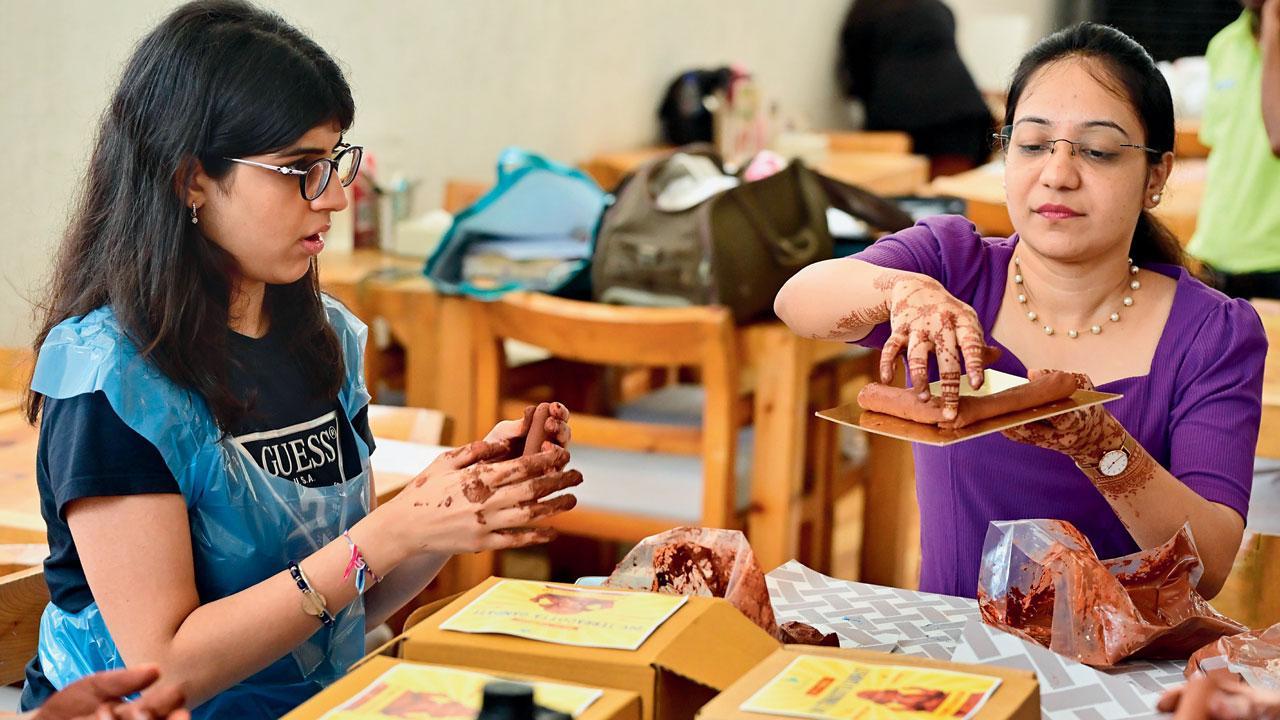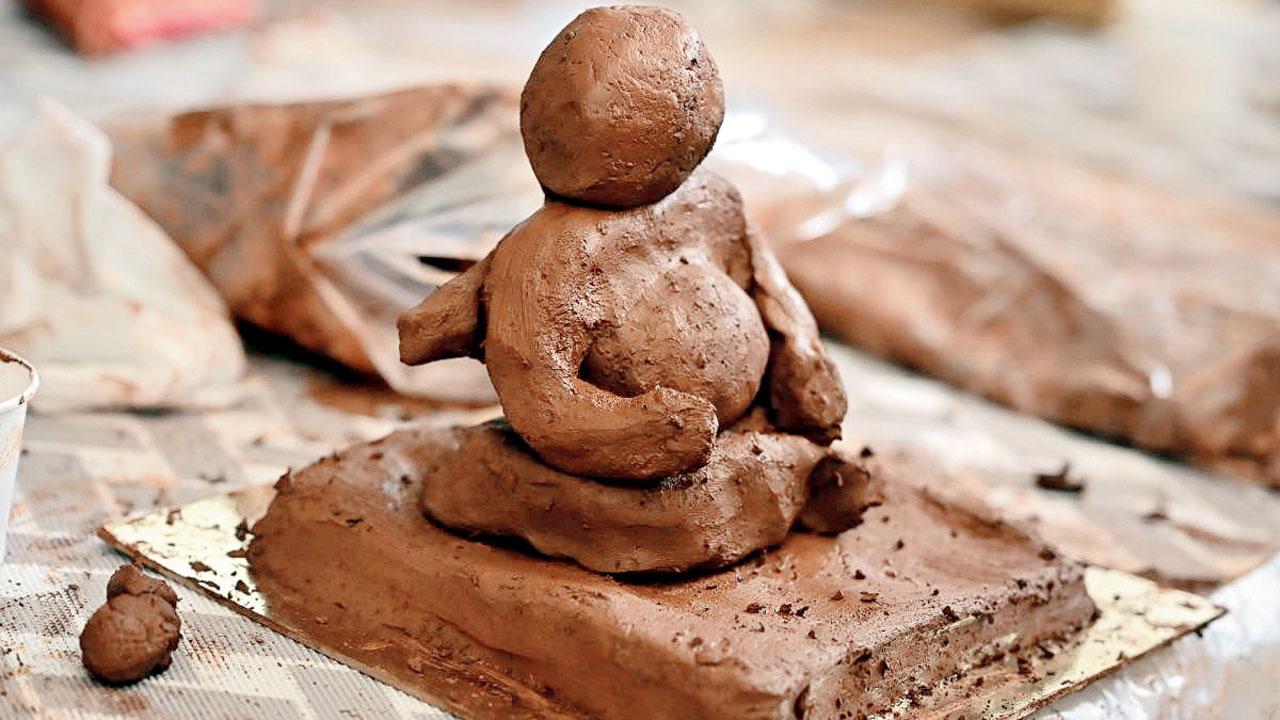Test Drive Show your love for Bappa—and for the planet—by shaping your own idol from eco-friendly terracotta clay at this workshop

The instructor Amruta Talawadekar shows mid-day reporter Priya Rupani how to roll clay balls into the desired shape for the idol’s base. Pics/Shadab Khan
Every year, as the monsoon trickles to a stop, the scent of delicious modaks and the sound of dhol tasha takes over Mumbai. Wearing the prettiest lehengas or kurtas to go pandal-hopping, and scouring all the sculptors’ stalls to find the perfect little Bappa to bring home—these are integral rituals of every Mumbaikar’s life, and this reporter is no different.
However, the thought of how the ocean is impacted by visarjan of so many idols each year prompted us to look for an eco-friendly Ganpati we could take home. When we stumbled across the workshop by Amruta Talawadekar at Khar’s Doolally Taproom, it’s as if Bappa had heard our wish. Will the idol look good? Will we embarrass ourselves? These were the thoughts running in our anxious mind as we had never worked with clay before. But the lively ambience of the microbrewery and eager faces of other attendees quickly calmed our nerves.

A Ganpati idol being moulded from terracotta, which dissolves in water, making it an eco-friendly material
Talawadekar, an architect and experienced artisan, instructed us to remove a packet filled with brown, gooey clay from the boxes given to us. “This is terracotta clay,” she explained, “Though it’s usually used for pottery, we are using it to make Ganpati idols since it is a natural material and dissolves in water easily.”
We pulled out equipment from the paper box—an apron, a golden stand and decorations to adorn the idol. We began by creating the base, turning medium-sized pieces of clay into round balls, before rolling those out to create the sides of the square base. Although it sounds easy, the method was hard to follow at first, since the clay was either too sticky if joined quickly, or too dry if left alone for long. After getting the timing just right, we used the same method to create the idol, including the legs, belly, thighs, ears, and the rest of the body, except the palms.
“There are two ways you can make the fingers. Either use a toothpick to carve into the clay or make each finger individually,” instructed Talawadekar. Since we chose to do the latter, the method took longer than usual. Nonetheless, the end product made us feel quite accomplished as it looked quite similar to the model created by the teacher. As someone not known for being artsy, the workshop nevertheless allowed us to explore our artistic potential and create a beloved idol.
Moreover, the awkward smiles at the beginning of the workshop had turned into comfortable conversations as people bonded over food and the despair over not getting the idol’s shape right. As we stared at our clay-stained hands, we realised that this workshop gave us our dream of shaping a gorgeous yet eco-friendly idol of Ganpati—a clay-morous experience we will never forget!
 Subscribe today by clicking the link and stay updated with the latest news!" Click here!
Subscribe today by clicking the link and stay updated with the latest news!" Click here!










